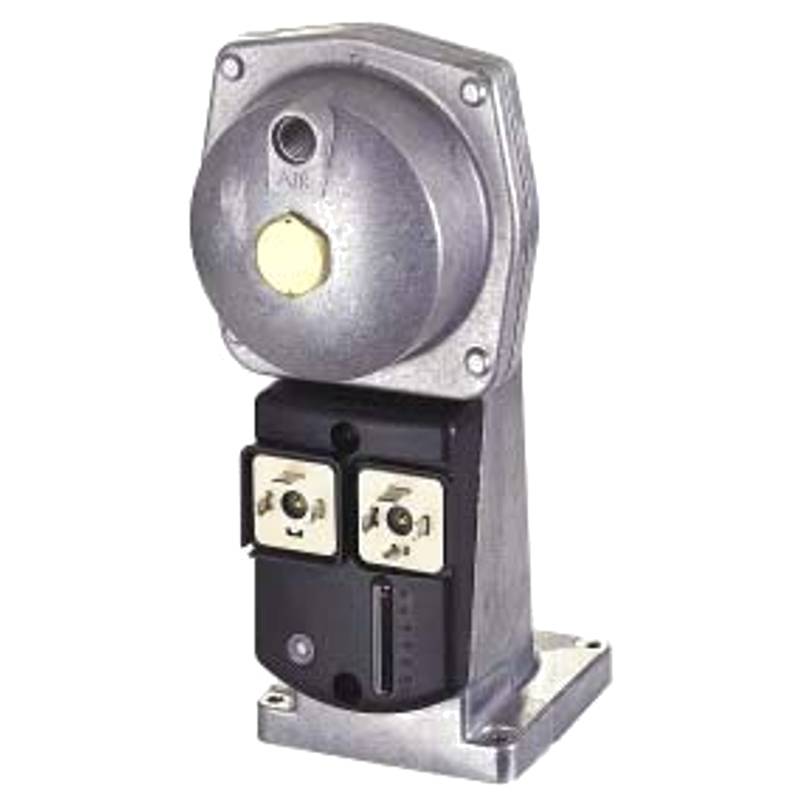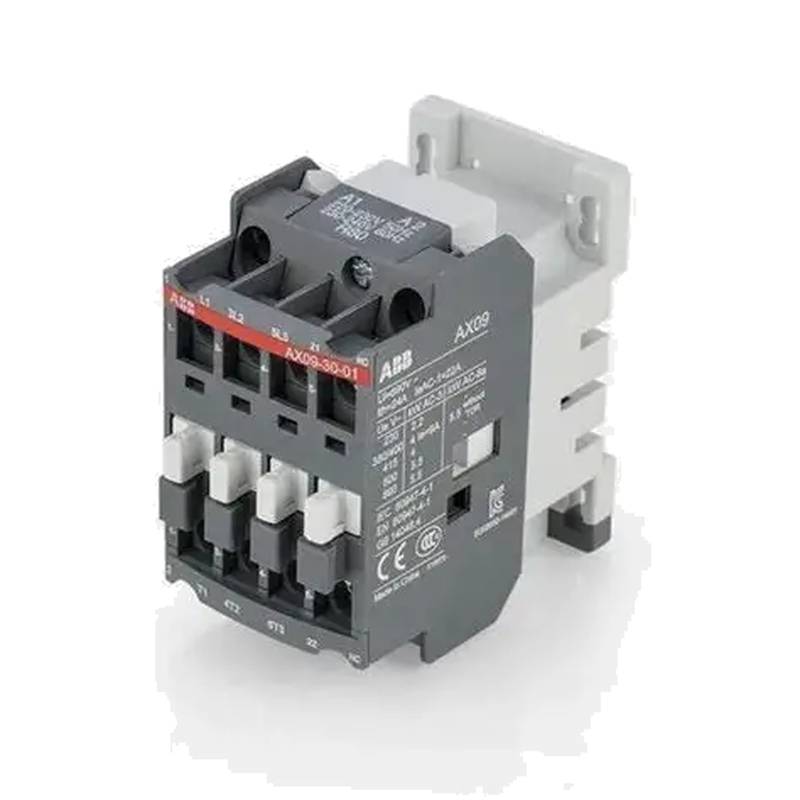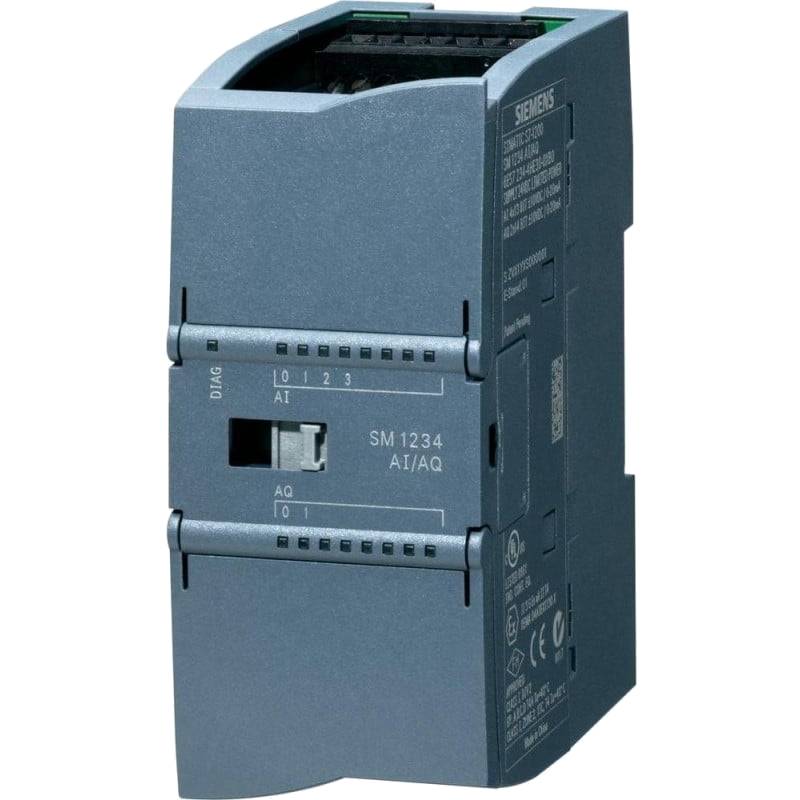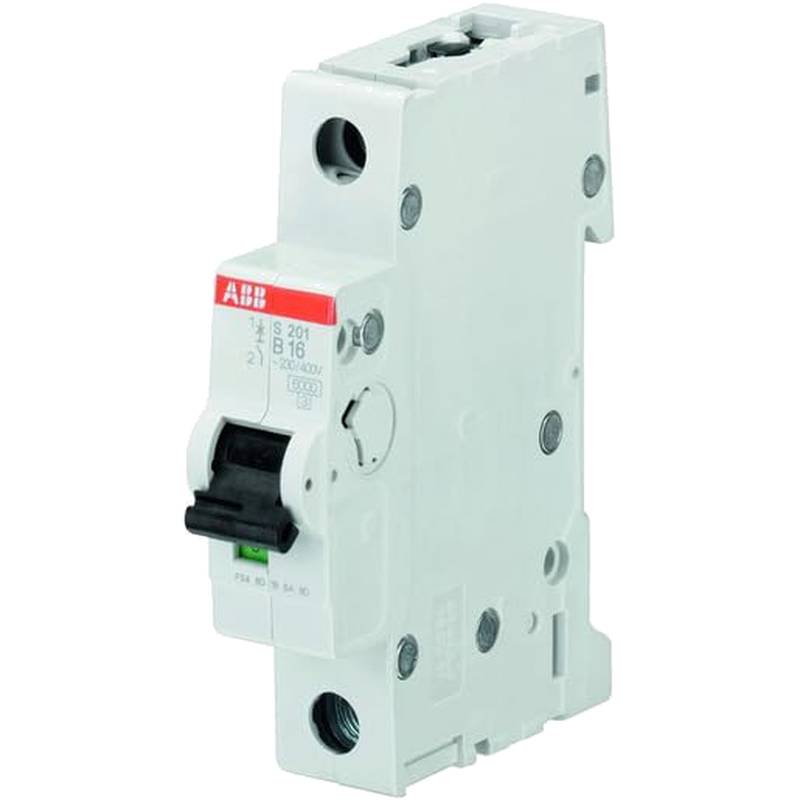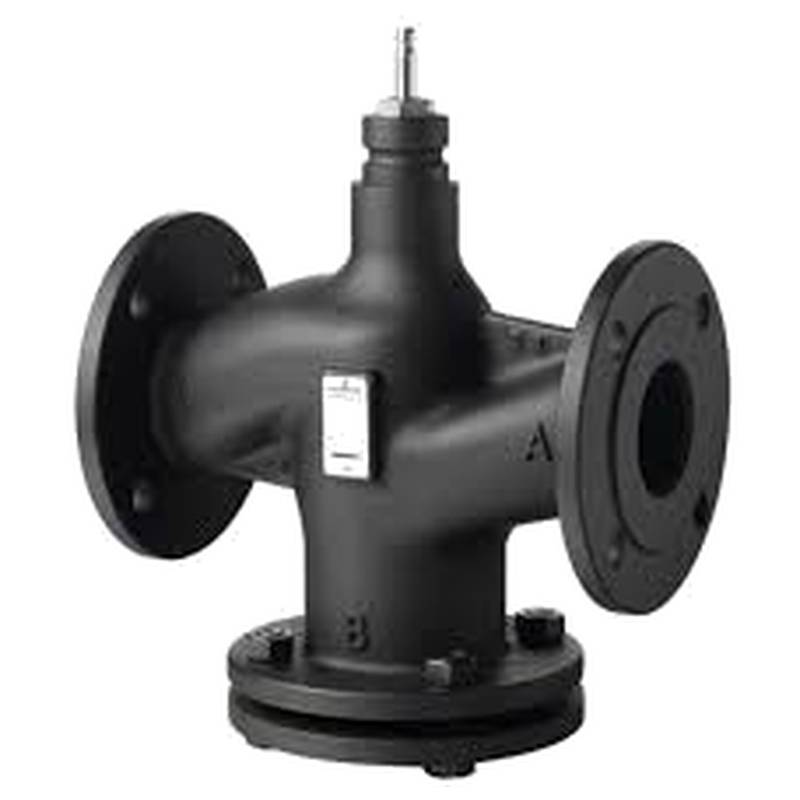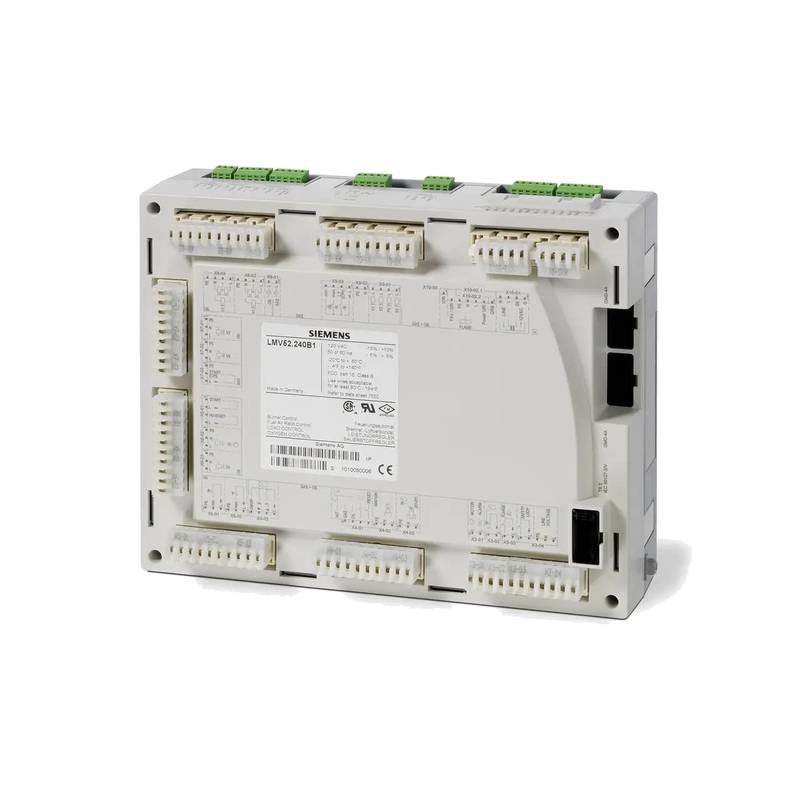
The Delta ECM-E3M-CM0604SSE Safety Brake Servo Control System represents a sophisticated solution engineered for high-precision motion control applications demanding stringent safety interlocks. This system integrates advanced servo drive technology with robust safety functionalities, ensuring reliable operation and safeguarding personnel and equipment. Key advantages include its high-speed response, precise positioning capabilities, and comprehensive safety features that comply with international standards. Technical parameters such as an input voltage range of 100-240VAC, output current up to 4A, and support for various communication protocols like EtherNet/IP and EtherCAT underscore its versatility. The system's compact design and advanced thermal management further enhance its suitability for demanding industrial environments.
Product Specifications
| Feature | Specification |
| :------------------- | :--------------------------------------- |
| Model Number | ECM-E3M-CM0604SSE |
| Input Voltage | 100-240 VAC |
| Output Current | 4A |
| Communication Ports | EtherNet/IP, EtherCAT, RS-485 |
| Safety Functions | STO (Safe Torque Off), SS1 (Safe Stop 1), SLS (Safely Limited Speed) |
| Encoder Feedback | Incremental, Absolute (Sin/Cos, BiSS, EnDat) |
| Protection Ratings | IP20 |
| Operating Temperature| 0°C to 55°C |
| Dimensions | 150mm x 120mm x 45mm |
Core Features & Market Positioning
The Delta ECM-E3M-CM0604SSE stands out in the industrial automation market due to its inherent safety integrated directly into the servo control loop, a departure from traditional external safety relays. This streamlined approach simplifies wiring and reduces system complexity, a significant competitive advantage. Its advanced digital signal processing ensures superior motor control performance, enabling precise torque, speed, and position regulation even under dynamic load conditions. The inclusion of multiple high-speed communication protocols positions it as a flexible solution for integration into diverse manufacturing environments, from automotive assembly lines to intricate packaging machinery. Delta's commitment to innovation is evident in the ECM-E3M-CM0604SSE's ability to support advanced encoder feedback types, crucial for applications demanding sub-micron accuracy.
Key Application Scenarios
This safety brake servo control system is ideally suited for applications where the prevention of unintended machine movement is paramount. Common scenarios include robotic end-effectors, automated guided vehicles (AGVs), material handling systems, and automated assembly stations where human operators may work in close proximity to moving machinery. The system's ability to perform Safe Torque Off (STO) ensures that the motor cannot generate torque, effectively preventing unexpected movement during maintenance or emergency stops. Furthermore, its Safely Limited Speed (SLS) function is invaluable in scenarios where reduced speeds are required during specific operational phases, such as during setup or when personnel are present in a designated safety zone, enhancing operational safety without compromising productivity. The system's precise motion control capabilities also make it ideal for high-speed pick-and-place operations and precision dispensing equipment.
Practical System Integration Guidance
Integrating the Delta ECM-E3M-CM0604SSE involves careful attention to wiring and communication setup. The system requires a stable 100-240VAC power supply, with appropriate circuit protection. Motor connections, encoder feedback wiring, and safety signal interlocks must be meticulously installed according to the system's documentation to ensure all safety functions operate correctly. For communication, establishing an EtherNet/IP or EtherCAT network connection requires configuring IP addresses and network parameters using Delta's proprietary software or compatible industrial network management tools. The integration of safety signals, such as emergency stop buttons or light curtains, into the designated safety input terminals is critical for enabling the STO and other safety functions. Detailed wiring diagrams and configuration guides are provided by Delta to facilitate a smooth commissioning process.
Operation and Risk Mitigation
Effective operation of the Delta ECM-E3M-CM0604SSE hinges on proper understanding of its safety features and operational modes. The Safe Torque Off (STO) function acts as a two-channel input that, when activated, immediately removes power to the motor drive, preventing any motion. This is a fundamental safety measure to mitigate risks associated with unexpected startups or coasting. The Safe Stop 1 (SS1) function ensures that the motor is decelerated to a stop within a specified time frame before STO is activated, providing a controlled shutdown. Safely Limited Speed (SLS) allows operation at reduced speeds, preventing hazardous situations while enabling certain tasks to continue. Understanding and correctly configuring these safety functions through the system's interface or associated software are critical for risk mitigation. Regular system checks and adherence to maintenance schedules are also essential to ensure continued safe operation.
Scalability & Long-Term Value
The Delta ECM-E3M-CM0604SSE offers significant scalability and long-term value, particularly for businesses looking to adopt Industry 4.0 principles. Its robust communication capabilities, including EtherNet/IP and EtherCAT, allow for seamless integration into larger automated systems and supervisory control and data acquisition (SCADA) platforms. This facilitates real-time data monitoring, performance analysis, and predictive maintenance, crucial for optimizing OEE (Overall Equipment Effectiveness). Compatibility with a wide range of Delta servo motors and other automation components ensures flexibility in system design and future expansion. The system's modular design and Delta's ongoing development of firmware and software updates ensure that it remains a relevant and high-performing component within evolving industrial landscapes, providing a solid foundation for future technological advancements and smart manufacturing initiatives.
FAQs
What are the primary safety functions of the Delta ECM-E3M-CM0604SSE?
The system features Safe Torque Off (STO), which prevents motor torque generation. It also includes Safe Stop 1 (SS1) for controlled deceleration and Safe Stop 2 (SS2) for controlled stopping with monitoring. Furthermore, Safely Limited Speed (SLS) ensures operation within predefined speed limits.
These integrated safety functions significantly enhance machine safety. They reduce the need for external safety relays, simplifying wiring and reducing costs. Compliance with international safety standards like IEC 61800-5-2 is a key benefit.
The precise implementation of these functions guarantees reliable protection. They are crucial for applications where personnel safety is a top priority. This advanced safety integration supports modern automation needs.
How is the Delta ECM-E3M-CM0604SSE integrated into existing automation systems?
The system supports major industrial communication protocols like EtherNet/IP and EtherCAT. This ensures easy data exchange with PLCs and HMIs. It allows for real-time monitoring and control of motion.
Wiring is simplified through dedicated terminals for power, motor, and encoder feedback. Safety signal inputs also connect directly, reducing complex wiring. This streamlined integration minimizes installation time and potential errors.
Configuration is managed via Delta's proprietary software or compatible tools. This allows for precise parameter setting and diagnostics. The system offers flexibility for both new installations and upgrades.
What technical specifications are crucial for selecting this safety brake servo control system?
Input voltage of 100-240 VAC is a primary consideration for power compatibility. The output current rating, up to 4A, must match motor requirements. Communication protocol support (EtherNet/IP, EtherCAT) is vital for network integration.
The encoder feedback type supported, such as incremental or absolute (BiSS, EnDat), is critical for precision. Safety functions like STO, SS1, and SLS must align with application safety requirements. IP20 rating indicates environmental suitability for non-harsh conditions.
Operating temperature range (0°C to 55°C) and physical dimensions (150x120x45mm) are important for installation planning. These specifications collectively ensure optimal performance and safety. They guide the correct application of the ECM-E3M-CM0604SSE.
Can the Delta ECM-E3M-CM0604SSE handle high-speed precision motion control tasks?
Yes, its advanced servo control algorithms ensure high-speed precision. The system offers excellent torque, speed, and position regulation. This is crucial for demanding applications like pick-and-place.
Support for high-resolution encoders, including absolute types, is key. This enables sub-micron positioning accuracy. The fast response time minimizes settling periods.
The combination of precise control and safety functions makes it ideal. It allows for fast, accurate movements while maintaining safety. This dual capability enhances productivity in complex automation.
What are the benefits of integrated safety features versus external safety relays?
Integrated safety simplifies wiring significantly, reducing installation time and complexity. This also lowers the overall cost of the automation system. Fewer components mean fewer potential points of failure.
It enhances system reliability and diagnostics. Safety parameters are configured directly within the servo drive. This provides a more cohesive and manageable safety solution.
Compliance with standards is often more straightforward with integrated solutions. The system offers a compact footprint, saving valuable cabinet space. This approach aligns with modern, streamlined industrial automation design.
How does the system's communication protocol impact its application?
EtherNet/IP and EtherCAT enable seamless integration into modern networks. This allows for high-speed data acquisition and control. It supports real-time communication with PLCs and HMIs.
These protocols facilitate advanced diagnostics and parameter management. They are essential for Industry 4.0 integration and smart manufacturing. Remote monitoring and configuration become easily achievable.
The choice of protocol depends on existing infrastructure and performance needs. Both are industry-standard, ensuring broad compatibility. This flexibility makes the system adaptable to various automation architectures.
What types of motors can be controlled by the Delta ECM-E3M-CM0604SSE?
The system is designed to control Delta servo motors. It supports a wide range of motor sizes and power ratings. Compatibility ensures optimal performance and safety integration.
It supports motors with various encoder feedback types. This includes incremental encoders for basic position feedback. Absolute encoders (Sin/Cos, BiSS, EnDat) provide high-resolution positioning.
The specific motor selection depends on the torque, speed, and precision requirements of the application. Delta's technical support can guide motor-system matching. This ensures a robust and efficient motion control solution.
What environmental conditions is the ECM-E3M-CM0604SSE designed for?
The system has an IP20 protection rating. This means it is protected against solid objects larger than 12.5mm. It is not designed for protection against water or dust ingress.
It operates within a temperature range of 0°C to 55°C. Proper ventilation within the control cabinet is essential. This temperature range suits typical indoor industrial environments.
The system should be installed in a clean, dry location. Avoid environments with excessive moisture, dust, or corrosive substances. This ensures the longevity and reliable operation of the device.
How is the safety system commissioned and validated?
Commissioning involves proper wiring of safety inputs and outputs. Safety parameters like STO, SS1, and SLS are configured via software. This requires careful adherence to the user manual.
Validation is performed through functional safety testing. This includes simulating emergency stop conditions. It verifies that the safety functions trigger as intended.
Documentation of the safety configuration and test results is crucial. Periodic re-validation ensures ongoing compliance. Professional safety expertise may be required for complex systems.
What troubleshooting steps can be taken for common issues with this servo control system?
Check power supply and connections first; ensure stable voltage. Verify motor and encoder feedback wiring for continuity and correct termination. Review diagnostic logs for error codes and status messages.
Consult the product manual for specific error code meanings and resolutions. Reset the drive after addressing the fault, if applicable. Ensure communication parameters are correctly configured for network stability.
If safety functions are not engaging, re-verify the safety input wiring and configuration. Check for any external interlocks or conditions preventing safety activation. Contact Delta technical support if issues persist after basic troubleshooting.
















